This interview with Gilda’s owner Scott Grundfor is the first in a series of Premium articles about Gilda, the car, the legend and the designer.
By Roberto Motta
Scott Grundfor is the CEO of Scott Grundfor Company, a firm devoted to the conservation, restoration and sales of classic cars. Located in Arroyo Grande, California, Grundfor has garnered 34 Best in Show awards, primarily with Mercedes Benz automobiles. In the past five years, he acquired several Ghia showcars, among them the 1955 Ghia “Gilda” showcar which is our feature.
Roberto Motta has been involved researching turbine powered cars and was very interested in the installation and drivability of the Gilda turbine project. He conducted this interview with Scott Grundfor in 2010 for VeloceToday.
Tell us about how you found the car.
I was offered Gilda (Chassis 9969 Carrozzeria Ghia) in 2005 when the car left the Blackhawk Museum. I wanted it because of its important history in automobile design and because I think it is beautiful. Gilda was offered to me by a broker, Mike Fairbairn, from RM Classic in Chattam Canada, who knew I had an interest in these special show cars.
We understand you have an interesting collection.
Cars of interest to VeloceToday readers include a 1965 Citroen ID 19; 1973 Ford Ghia Mini Max Concept; 1979 Ford (Ghia) Probe I Concept; 1982 Ghia Brezza Concept; 1982 Ghia Barchetta Concept; 1984 Ghia Pockar Concept; 1985 Ghia Shuttler Concept; 1985 Ford (Ghia) Probe V Concept.
In what condition was the car when you purchased it and did it have the OSCA engine at that time?
As Gilda had been in museum storage since October of 1955 it was in superb original condition. We only needed to do a careful “conservation” with very little restoration. Yes, it was very complete, even including the original Ceat tires that were on the from the 1955 Salone dell’Automobile a Torino, but there was no drive train in Gilda when I purchased the car.
Tell us a bit about the installation of the turbine. The design and installation required a lot of time and money. The goal was to complete the original intention of Professor Savonuzzi that Gilda be turbine powered. It was also important to make the installation of this power plant minimally invasive and completely reversible. We began the conservation in 2005 shortly after I bought Gilda. At that time we began the research and design work for the installation of the turbine engine.
The preservation/ conservation and engineering for the turbine engine were done at our facility (Scott Grundfor Company) in Arroyo Grande, California.
We explored many different turbine/drive systems. It was important that the drive system be period correct for Gilda. The problem with automotive experimental turbines of the period was the size and weight. For example the Chrysler A-831 which would eventually power the Chrysler Turbine car of the 1960’s was much too large and heavy for Gilda. It is a more advanced unit than the AiResearch as it incorporates a regenerative component. After extensive research regarding possible contemporary turbine power units I found the AiResearch unit. It was featured in an advertisement from the July 28,1955 issue “American Aviation” magazine. I was eventually able to locate a similar unit that now powers Gilda. I have consulted several experts on the GTP 30-51 unit and it belongs to the period of the mid to late 1950’s. As you can see from one of the advertisements Garrett Corporation was very advanced and doing research on space travel systems and nuclear power conversion units. Perhaps it is appropriate that Gilda appears as if from another world.
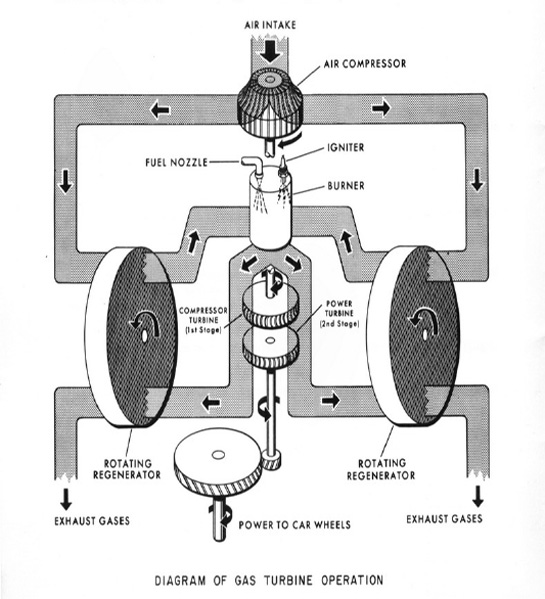
Chrysler diagram from 1963 has two regenerators but give a nice view of how the turbine works in a car application.
Can you briefly describe how the turbine works?
The AiResearch GTP-30/51 is a single stage gas turbine that will run on a variety of fuels. K1 Kerosene is what I use as it is very clean burning. It will run equally well on Diesel, for example. The turbine spins an output shaft at 54,000 RPM that is geared down through a reduction box attached to the front drive of the turbine unit to 8,000 rpm. As the hydrostat transmission is rated to operate at a maximum speed of 3,000 rpm there is another reduction via a Gilmer drive that gives a final drive input of 2800rpm. This drives the hydrostatic transmission. Basically the hydrostatic transmission consists of two pumps, one pumping fluid in and one out, with a movable “swash plate” in between which regulates the amount and direction of the fluid flow. The plate can be adjusted by moving the T-bar in the cockpit to give forward, neutral and reverse, so there are no gears, just an infinitely variable power delivery.
What problems had to be solved to install the turbine?
The biggest challenge was to not change the original parts of the car. For example, the turbine engine and transmission required very little modification to any original structure of parts of Gilda. There are no pedals or controls except the control lever between the driver and passenger seats. The turbine engine starts with the turn of the ignition key and spools up in about 30 seconds to 55,000 rpm. The turbine is controlled automatically to run at a constant 55,000 rpm. The transmission is a hydrostatic unit that is automatic. As you push the control lever forward the car shifts from neutral to drive and is infinitely variable from low to high speed range. The turbine speed (rpm) controller automatically responds to load conditions adding more fuel to keep the turbine speed constant. To stop a brake is not necessary as the hydrostatic transaxle unit hydraulically slows down the car when you move the control lever back toward the neutral position. The car only has an emergency brake backup.
Tell us about the first turbine tests.
The first start up of the turbine engine was done in the workshop. Yes, we were unprepared for the sound and power of the turbine. The turbine starts very slowly at first with a 24V starting system. It takes 15 seconds to reach 40% rpm. At that point the starter is disengaged and igniter takes over and a flame shoots out the exhaust about 8 feet. This is accompanied by a loud whoosh at ignition. The next 10 seconds the turbine slowly goes up in rpm to about 60%. Then in 2 or 3 seconds it climbs to full 100% power. It is the last 2 seconds we were unprepared for. We all thought the turbine was going to explode!! Later we discovered that this is just a “normal” start.
What kind of problems were encountered on the road?
The first driving test was done on a private road near the workshop and we initially had some engineering problems. The power transfer system from the turbine output/ reduction shaft to the Hydrostatic transaxle had to be changed due to alignment and vibrations issues.
What are the most important and outstanding aspects of Gilda?
Two things are outstanding about the car. First, the design. It is beautiful like its namesake, Rita Hayworth. It was a joint experimental project between Chrysler and Ghia. Chrysler design chief, Virgil Exner, wanted to change the conservative look of the Chrysler line from the early 1950’s. It was clear to him that the signature design feature of that decade would be the future: jet airplanes, rocket ships, aerodynamics. From a practical standpoint, the 1955 Chrysler 300 with the new Hemi V8 engine was having problems with directional stability at high speeds. Savonuzzi was not only in charge of design at Ghia but also a professor at the Polytechnico specializing in Aeronautical engineering. He supervised the construction of the first wind tunnel at the school and Gilda was in fact “created by the wind”.
A 1\5 scale model of Gilda was tested in the tunnel and changes in her design we made based on the testing. The tailfins on Gilda represent a solution for the stability issue on the 1955 Chrysler vehicles. In fact it represents the genesis of what Chrysler referred to as the “Forward Look”. All Chrysler products copied this “Big Tailfin” theme.
It was hugely successful for Chrysler in terms of sales with GM and Ford following Chryslers lead in 1958 and 1959. Savonuzzi was hired by Chrysler in 1957 and became head of Chryslers Turbine development project in Detroit. He was responsible for the Chrysler Turbine cars of 1963.
Another thing that is outstanding regarding Gilda is the quality of the craftsmanship. Even after 56 years the body and paint are in show condition. The body shell is made from hand formed sheet aluminum with a full belly pan that forms part of the structure. This is supported by a lightweight but strong chassis.
Next, VeloceToday reveals the legend of Gilda, the movie, the star, and the links between Italy and the U.S.
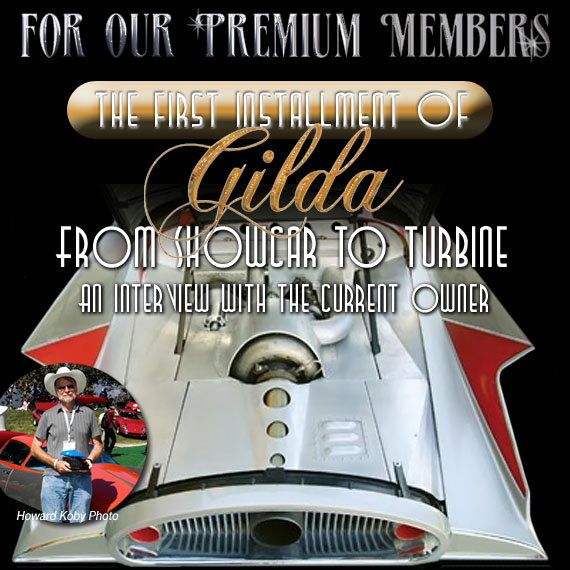
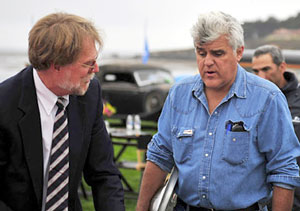
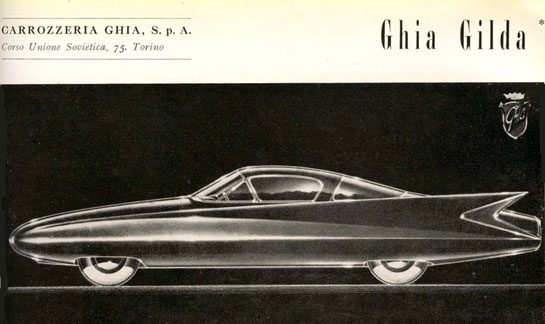
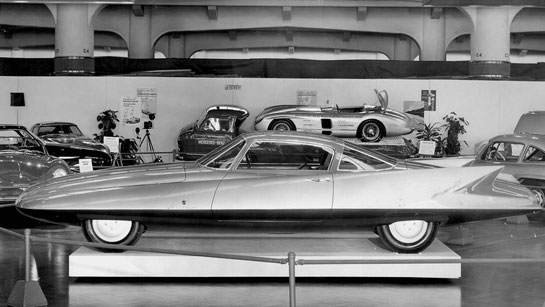
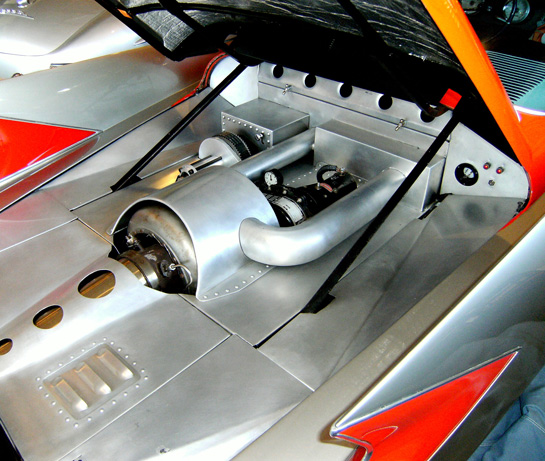
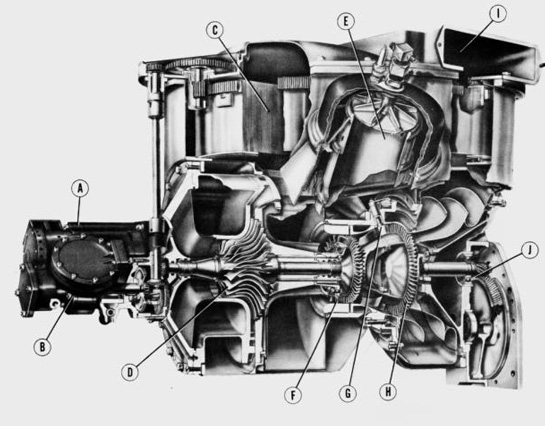
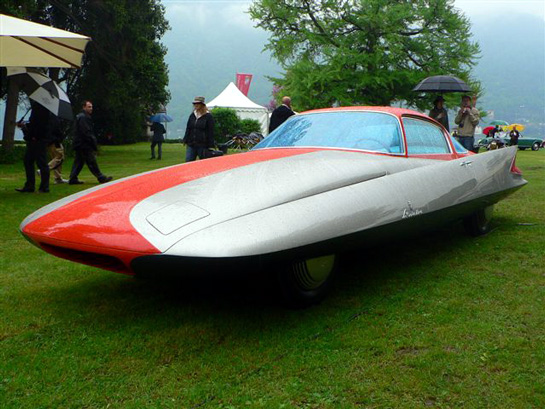
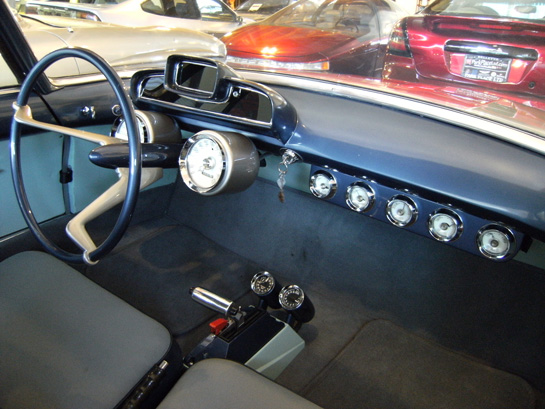
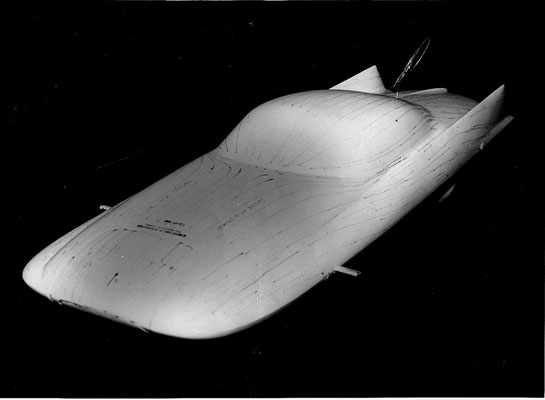
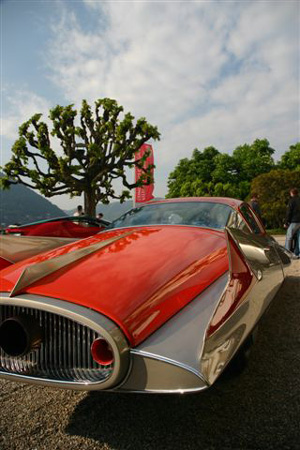
Kudos to those who labored to bring to life what the automaker only
promised–a turbine powered car. Ironic that Jaguar in 2011 is now showing an electric GT car powered by batteries which are recharged by generators powered by–two flashlight sized jet turbines! I wonder if the restorers here ever found any evidence of any actual work done on powerplants for atomic powered cars? I seem to remember Ford’s George Walker premiering some “atomic powered” dream cars in the early ’50s. Maybe Alex Tremulis was the designer, he who also is known for a car called the Tucker Torpedo.